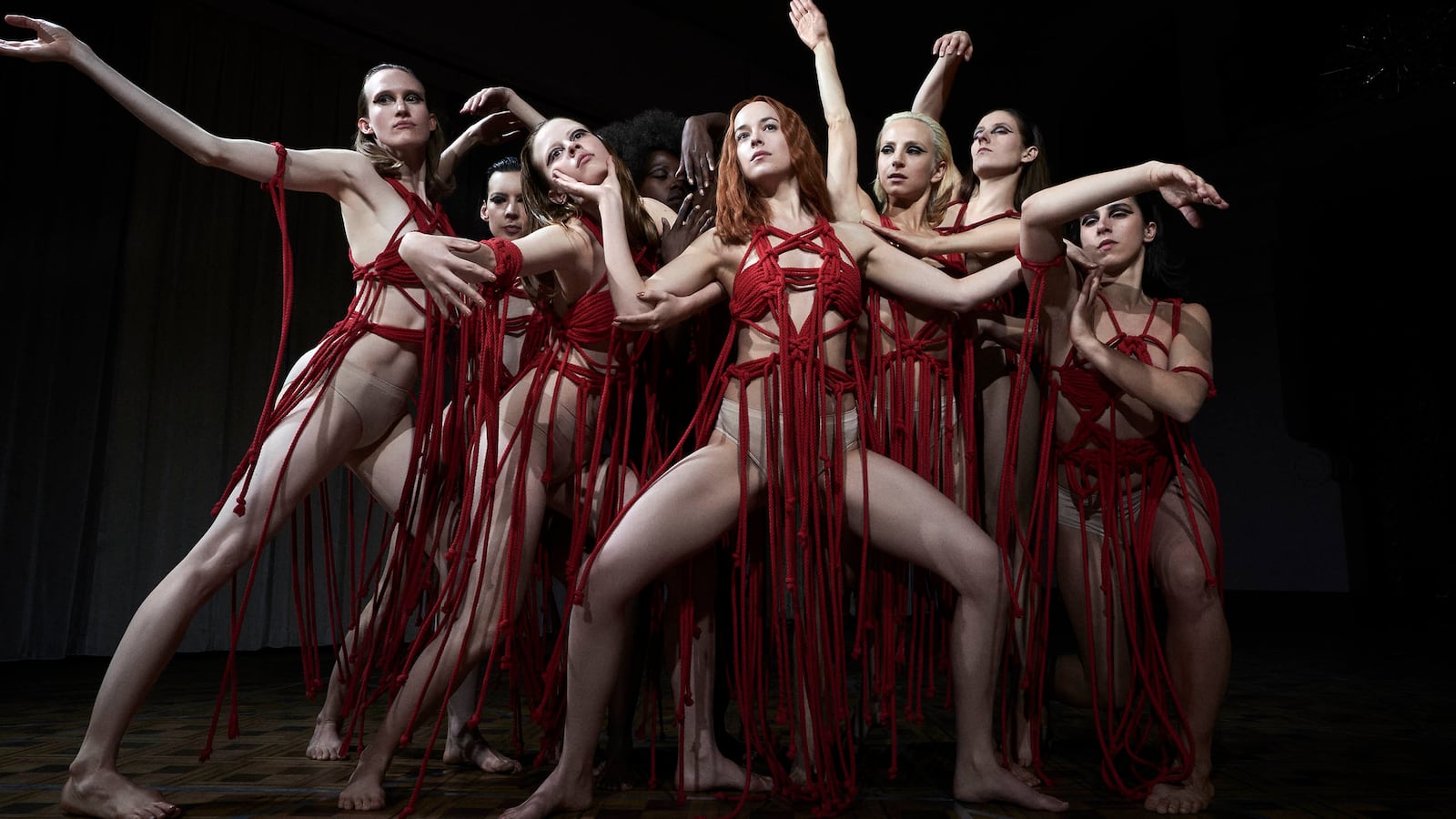Last year, in the bowels of an abandoned Italian cinema, some lucky forager happened upon a 35mm print of Dario Argento’s 1977 Suspiria that had been left untouched since the late ‘70s. It was an eerie case of life imitating art; in the film’s finale, the burgeoning ballerina heroine is roving the underbelly corridors of her dance studio when she too finds something uncanny and bewitching.
The best compliment I can pay to Luca Guadagnino’s remake is that it could credibly pass as having been, like its antecedent, dug up out of a basement—or, more aptly, exhumed from the tombs of ‘70s arthouse horror. It is remarkably difficult, in 2018, to produce something anew that feels authentic to another era. Yet this is what Guadagnino has accomplished: a dark fantasy shimmering with the dusty luster of the past.
Long and digressive (Argento’s uncut print spanned six reels; Guadagnino’s would be pushing double digits), the new Suspiria takes the same general story—the dancers, the occult—and lends it a cool austerity. Like the original, the new Suspiria is a fable. Yet screenwriter David Kajganich and Guadagnino mutate the survival story into something spasmodic and at times inscrutable. They envision a mythic universe as expansive as that of Pan’s Labyrinth or The Shining (and poised to inspire just as many fan theories), but they make its defining attribute a fierce femininity. Here, women are strong, capable and powerful, sometimes ruthlessly so. Arriving one year after Me Too boomed through Hollywood, Suspiria holds a whispered decree: believe women. But also: don’t underestimate them.
Doing away with Argento’s chromatic dazzle, Guadagnino renders his 1977 West Berlin setting as grey, grim and foul-weathered. With the Berlin Wall towering across the street, the Helena Markos Dance Company is an island of unity and artistry in a deadened city. The film begins like the original, with a keen arrival and a mad exit: Susie Bannion (Dakota Johnson), a coy girl of rural Mennonite origins, blows into the dance school with a rainstorm while Patricia (Chloe Grace Moretz) devolves into psychotic ramblings in her therapist’s office. Patricia leaves the shrink, a hunched Jungian disciple named Dr. Josef Klemperer (Tilda Swinton), with a notebook full of oracular notes and scribblings, setting a mystery plot in motion.
If the new Suspiria were a canonized lost-and-found reel, Dr. Klemperer’s storyline would have been the duller chunk of the movie largely spliced out, included in full only in an uncut “legacy” form. The richer story belongs to Susie. After wowing the dubious dons of the school, particularly its director Madame Blanc (Swinton again, willowier this time), Susie joins the troop. She fills a company spot recently abandoned by Patricia, whom the instructors claim fled to join the Baader-Meinhof riots, which appear through the film in television and radio news clips.
The school feels like a spooky sorority where the dancers live-in to rehearse and sleep and dine (at one point on chicken wings, for some reason). When Susie is plagued by nightmares, her new cohorts, including her closest friend Sara (Mia Goth), assure her that they’re endemic to the place. During the day, the troop stretches and dances before the teachers, preparing for the final performance of a piece called Volk that was created by Madame Blanc herself. When the show finally arrives, the dancers drape themselves in scarlet string, their bodies vessels of heat and vigor.
Guadagnino is known for his sublime sensitivity, but in Suspiria passion comes alive not in subtle dialogue or exquisite tableaus (per his usual modus operandi, best on display in Call Me by Your Name and I Am Love), but through movement. All of the dance choreography we witness is jerky to the point of convulsive, with punches and kicks and agile leaps. Dance here is imbued with a necromantic energy; during the film’s most grotesque scene, Susie’s dance gestures trigger another dancer’s body, trapped in the room below, to contort and break in tandem. But dance is also erotically charged. “Like what it must feel like to fuck,” Susie says, when Madame Blanc asks her how she feels while dancing. There is little grace to these women; rather, they project power.
This brings us to the movie’s debatable feminist bent. There is no question that—even during Suspiria’s splatter film finale with guts and gore and the famous prosthetic penis—this a movie about female mastery. Once, witches were a patriarchal creation, a spine-chilling fantasy based in male fear of bloodthirsty women. There is a long tradition of women seizing control of this image, rising in wicked rage against a history of injustice. In Suspiria, the witches are not the hunted but the hunters, marrying the spiritual and corporeal to combat the gloom and terror of the outside world. That the film is too chaotic and complex for a neat ending just makes it all the better.






